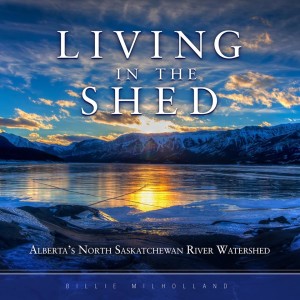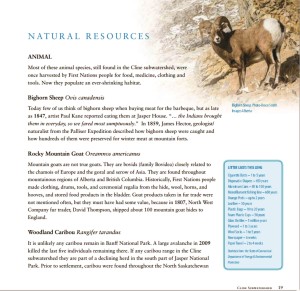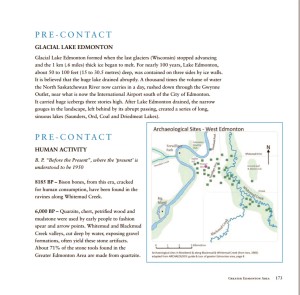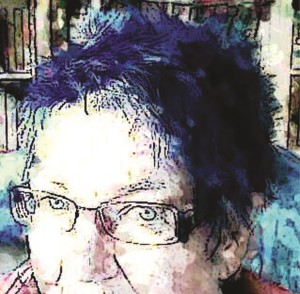A guest post by Billie Milholland.
 NON-FICTION
NON-FICTION
In the 1980s when I wrote magazine and newspaper articles, the ‘reporter’ style was still fairly standardized. The inverted pyramid. You plunged right in with the ‘who, when, where, why, what, and how’; using the most newsworthy bits of information. The ones that delivered the highest impact.
Then you added the most sensational details. If the details seemed less than provocative (they most often did), you elevated them by stating in ways that suggested there was something more just below the surface that might be revealed later. “The bus driver neglected to mention her reason for….”. “It is interesting to note that the first person on the scene had the least to say about …”.
You wrapped up with general, background information that wouldn’t be missed if the reader didn’t get that far. The word count was tight and the belief that most readers were under-educated and overly fickle was strong. The biggest sin was ‘burying the lead’ – not waving around the flashiest information first. Bottom line… you informed people. Quickly, efficiently and with little commentary.
Direct quotes were prized, but longer anecdotes, not so much. I found it interesting however, that when I added a few anecdotes, and my beleaguered editors let them pass, I received actual fan mail.
FICTION
Leaving non-fiction behind for a while, my first foray into writing fiction led to realms of endless options. I could start slowly, building up expectations as I went along. I could dive right into the deep end of a pool of sharks and bloody up my protagonist right away. I could then wander into a stream of consciousness, before I sent my protag over a thundering waterfall clutching the last piece of her grandmother’s embroidered tablecloth.
I was giddy with freedom. Story poured out. I entertained people; informing them was secondary. I could use facts, but my story didn’t have to be based directly on facts. I could play with time and space.
NON-FICTION
Returning briefly to non-fiction, after about a decade away, I was pleasantly surprised to see that magazine writing, and to some degree, newspaper writing as well, had evolved to a more conversational style. Apparently the inverted triangle had been an American aberration, brought about by reporters trying to communicate stories during the American Civil War. Since the telegraph service could be interrupted unexpectedly, they had to make sure they top-loaded their news.
The rest of the world didn’t do it that way, and now we don’t either… well, not as much. I wrote a few cook books during this time and a small book about the North Saskatchewan River. Using a more casual, conversational style, along with a seasoning of anecdotes made those books more fun to write and they were reasonably popular.
FICTION
When I started writing fiction again, I felt very experimental. Producing successful non-fiction had taught me more about what people wanted to know. Bits of interconnected trivia could work in fiction too, if they were stitched carefully along the edges of the theme. People are information junkies at heart, but still wanted the rise and fall of a good story. I played with that in my novella in Women of the Apocalypse. The feedback I received from readers was encouraging. The feedback I received from readers of some of my short stories validated my tendency to use quirky bits of trivia in fiction.
NON-FICTION
After another decade away, when I returned to non-fiction, I found daily news tossed into endless Twitter streams; bits and pieces about immediate news, interspersed with links to longer discussions about what’s happened, what’s happening, along with various versions of ‘who, when, where and how’. Many longer discussions showed up in blog form. A brilliant system.
into endless Twitter streams; bits and pieces about immediate news, interspersed with links to longer discussions about what’s happened, what’s happening, along with various versions of ‘who, when, where and how’. Many longer discussions showed up in blog form. A brilliant system.
Because reading text online is harder than it is in traditional hard copy, I learned that blogs worked better if broken up into digestible portions by subheadings and images.
 More experimentation. Information bulletins about specialized scientific studies and initiatives written for a general audience. Successes I had with those, culminated in my most recent book, Living in the SHED, which is full of bits and pieces of information, broken into digestible portions by subheadings and images. Will it be successful? Time will tell.
More experimentation. Information bulletins about specialized scientific studies and initiatives written for a general audience. Successes I had with those, culminated in my most recent book, Living in the SHED, which is full of bits and pieces of information, broken into digestible portions by subheadings and images. Will it be successful? Time will tell.
FICTION
2016 will be all about fiction for me. I haven’t completely processed everything I’ve learned from writing non-fiction this time, but what I do know is the rush of ideas about how to edit the first drafts of two novels I left simmering on the back burner are much different and more exciting than the ideas I had when I left them there.
Billie Milholland has bobbed back and forth from non-fiction to fiction and back again. She’s written for newspapers, magazines and had stories produced on CBC radio. Women of the Apocalypse, in which one of the four novellas is hers, won an Aurora Award in 2009. She has a short story in Bourbon and Egg Nog, the 10th Circle Christmas anthology, which won an Aurora Award in 2012. More recently, Green Man She Restless, her story in the Urban Green Man Anthology was nominated for a 2014 Aurora Award. Her most recent project, a non-fiction, environmental book, Living in the SHED, will be out in December 2015 and can be ordered at www.nswa.ab.ca. Visit Billie at www.billiemilholland.com.
She’s written for newspapers, magazines and had stories produced on CBC radio. Women of the Apocalypse, in which one of the four novellas is hers, won an Aurora Award in 2009. She has a short story in Bourbon and Egg Nog, the 10th Circle Christmas anthology, which won an Aurora Award in 2012. More recently, Green Man She Restless, her story in the Urban Green Man Anthology was nominated for a 2014 Aurora Award. Her most recent project, a non-fiction, environmental book, Living in the SHED, will be out in December 2015 and can be ordered at www.nswa.ab.ca. Visit Billie at www.billiemilholland.com.
